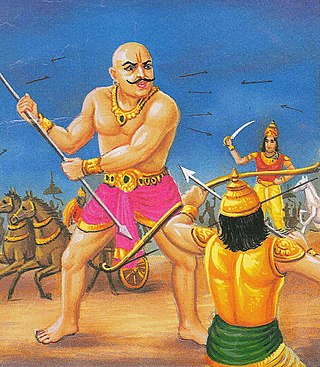
Ghatotkacha is a prominent character in the story of Mahabharata. His name comes from the fact that his head was hairless (utkacha) and shaped like a ghatam, or a pot. Ghatotkacha was the son of the Pandava Bhima and the demoness Hidimbi, and thus a half-human, half-demon hybrid.
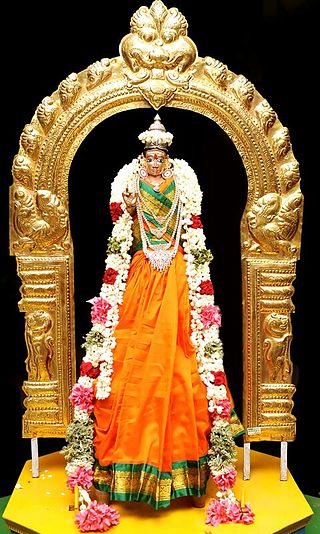
Draupadi, also referred to as Krishnā, Panchali, and Yajñaseni, is the main female protagonist of the Hindu epic Mahabharata, and the wife of the five Pandava brothers—Yudhishthira, Bhima, Arjuna, Nakula, and Sahadeva. She is noted for her beauty, courage, and polyandrous marriage.

Kareena Kapoor Khan is an Indian actress who appears in Hindi films. She is the daughter of actors Randhir Kapoor and Babita, and the younger sister of actress Karisma Kapoor. Noted for playing a variety of characters in a range of film genres—from romantic comedies to crime dramas—Kapoor is the recipient of several awards, including six Filmfare Awards, and is one of Bollywood's highest-paid actresses.

Alias Grace is a historical fiction novel by Canadian writer Margaret Atwood. First published in 1996 by McClelland & Stewart, it won the Canadian Giller Prize and was shortlisted for the Booker Prize.

A mammy is a U.S. historical stereotype depicting black women, usually enslaved, who did domestic work, including nursing children. The fictionalized mammy character is often visualized as a fat, dark-skinned woman with a motherly personality. The origin of the mammy figure stereotype is rooted in the history of slavery in the United States, as slave women were often tasked with domestic and childcare work in American slave-holding households. The mammy caricature was used to create a narrative of black women being happy within slavery or within a role of servitude. The mammy stereotype associates black women with domestic roles and it has been argued that it, combined with segregation and discrimination, limited job opportunities for black women during the Jim Crow era, approximately 1877 to 1966.

The Mumbai cricket team is a cricket team which represents Mumbai in Indian domestic cricket. It is governed by Mumbai Cricket Association. Its home ground is Wankhede Stadium in Churchgate.

Bharatayuddha or Bharat Yudha is a term used in Indonesia for the Kurukshetra War, and to describe the Javanese translation and interpretation of the Mahabharata. The Mahabharata was translated into (old) Javanese under the reign of king Dharmawangsa of Medang. The current poem was started by Sedah in 1157, and finished by mpu Panuluh. Mpu Panuluh also wrote the Kakawin Hariwangsa.
A lady's companion was a woman of genteel birth who lived with a woman of rank or wealth as retainer. The term was in use in the United Kingdom from at least the 18th century to the mid-20th century but it is now archaic. The profession is known in most of the Western world. The role was related to the position of lady-in-waiting, which by the 19th century was applied only to the female retainers of female members of the royal family. Ladies-in-waiting were usually women from the most privileged backgrounds who took the position for the prestige of associating with royalty, or for the enhanced marriage prospects available to those who spent time at court, but lady's companions usually took up their occupation because they needed to earn a living and have somewhere to live. A companion is not to be confused with lady's maid, a female personal attendant roughly equivalent to a "gentleman's gentleman" or valet.

Sarabhai vs Sarabhai is an Indian Hindi-language television sitcom that aired on STAR One from 1 November 2004 to 16 April 2006 and on Disney+ Hotstar from 15 May to 17 July 2017 for two seasons in 80 episodes altogether. The show was directed by Deven Bhojani and produced by Jamnadas D. Majethia and Aatish Kapadia under the production banner of Hats Off Productions. Starring an ensemble cast of Satish Shah, Ratna Pathak Shah, Sumeet Raghavan, Rupali Ganguly and Rajesh Kumar, the show revolves around the Sarabhais, a quintessential upper-class Gujarati family living in the upmarket neighbourhood of Cuffe Parade in South Mumbai. The family members include the matriarch, Maya; her husband, Indravadan; their two sons, Sahil and Rosesh; Sahil's wife, Monisha; Indravadan and Maya's son-in-law, Dushyant; and Indravadan's brother-in-law, Madhusudan Fufa. Regarded as being ahead of its generation in terms of its concept, writing, and average viewership ratings at the time of its initial release, the show has gone on to become a cult classic.

Babyji is a novel by Abha Dawesar first published in 2005. Set in 1980s Delhi, India, it recounts the coming of age and the sexual adventures and fantasies of a 16-year-old bespectacled schoolgirl, the only child of a Brahmin family. The three simultaneous "affairs" she has in the course of the novel are all secret, and all with members of her own gender: two with older women and one with a classmate.

Thrity Umrigar is an Indian-American journalist, critic, and novelist.
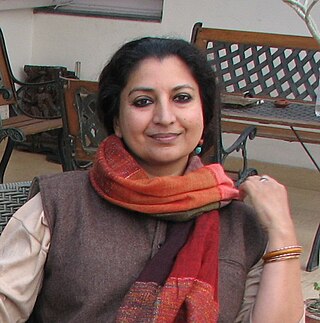
Geetanjali Shree, also known as Geetanjali Pandey, is an Indian Hindi-language novelist and short-story writer based in New Delhi, India. She is the author of several short stories and five novels. Her 2000 novel Mai was shortlisted for the Crossword Book Award in 2001, while its English translation by Nita Kumar was published by Niyogi Books in 2017. In 2022, her novel Ret Samadhi (2018), translated into English as Tomb of Sand by Daisy Rockwell, won the International Booker Prize. Aside from fiction, she has written critical works on Premchand.

Rich Like Us is a historical and political fiction novel by Nayantara Sahgal. Set in New Delhi during the chaotic time between 1932 and the mid-1970s, it follows the lives of two female protagonists, Rose and Sonali, and their fight to live in a time of political upheaval and social re-organization.
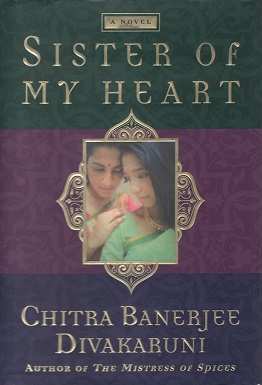
Sister of My Heart is a novel by Chitra Banerjee Divakaruni. First published in 1999, this novel was followed in 2002 by a sequel The Vine of Desire.
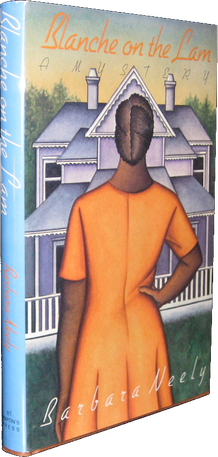
Blanche on the Lam is a 1992 mystery novel by author Barbara Neely, the first in a series by her. This novel brings to light the intelligence and power of an African-American domestic female worker in the midst of a racist and sexist society. The book won the Agatha Award and the Anthony Award for Best First Novel, and the Macavity Award for Best First Mystery. The series continues with Blanche among the Talented Tenth (1994), Blanche Cleans Up (1998), and Blanche Passes Go (2000).

Thalaivaa is a 2013 Indian Tamil-language action thriller film written and directed by A. L. Vijay. It stars Vijay in the title role. The film, produced by Chandraprakash Jain, features background score and soundtrack composed by G. V. Prakash Kumar with cinematography and editing handled by Nirav Shah and Anthony respectively. The story revolves around a dancer who takes over his father's duty as a crime boss after his death. The film also stars with an ensemble supporting cast includes Amala Paul, Ragini Nandwani, Sathyaraj, Santhanam, Abhimanyu Singh and others.
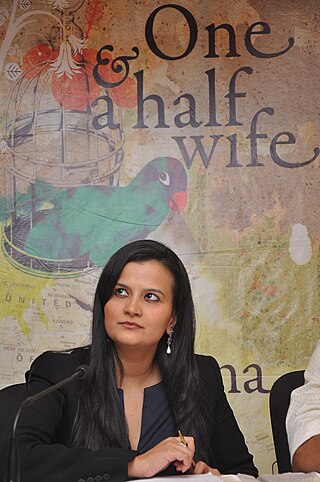
Meghna Pant is an Indian author, journalist and speaker. She has won a variety of awards for her contribution to literature, gender issues and journalism. In 2012, she won the Muse India National Literary Awards Young Writer Award for her debut novel One-and-a-Half Wife. Her collection of short stories, Happy Birthday and Other Stories was long-listed for the Frank O’Connor International Award.

Akira is a 2016 Indian Hindi-language action thriller film co-written, produced and directed by A. R. Murugadoss. It is a remake of the 2011 Tamil-language film Mouna Guru, and features Sonakshi Sinha, Konkana Sen Sharma and Anurag Kashyap in the lead roles.
The Space Between Us may refer to:

Mishan Impossible is a 2022 Indian Telugu-language comedy thriller film written and directed by Swaroop R. S. J. of Agent Sai Srinivasa Athreya fame. It stars Taapsee Pannu and child actors Harsh Roshan, Bhannu Prakasan, and Jayateertha Molugu. The film is a fictional account of a true incident that took place in 2014, in Patna. Three school kids, from rural Andhra Pradesh, decide to get rich, quickly, by helping catch and turning over, Dawood Ibrahim, to the authorities.



















